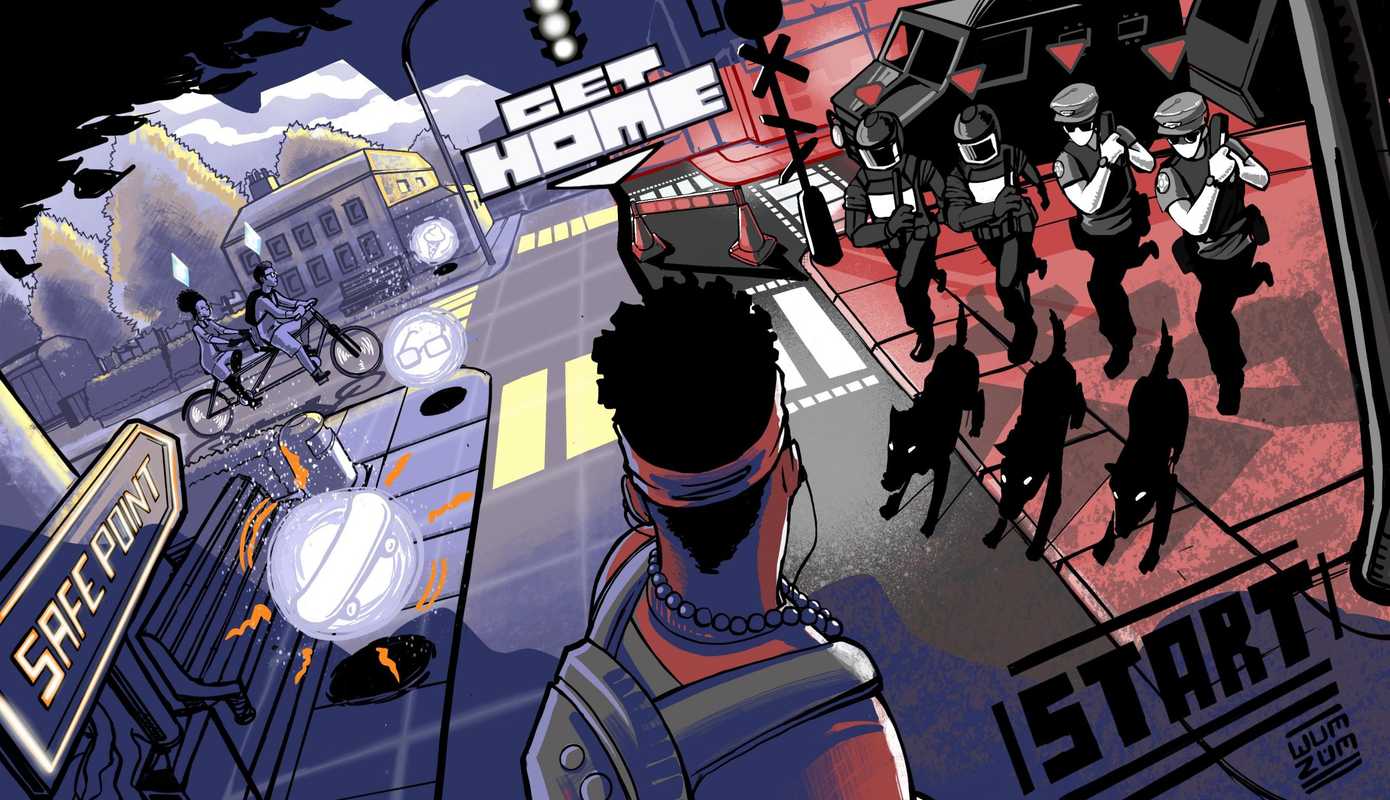“History is a nightmare from which I am trying to awake”
James Joyce
“But what did I do to be so blue? Bear with me.”
Ralph Ellison
One day, I’d like to write a novel that imitates James Joyce’s Ulysses in which the main character looks like me, a young Black man. In the Irish author’s great work, he details an ordinary day in the mundane life of the protagonist, Leopold Bloom. He follows Bloom as he prepares breakfast, walks to the post office, and interacts with friends and lovers. He’s not a particularly remarkable or exceptional character, he simply goes about his day.
That’s the story I thought about when I came across the video on Twitter of 25-year-old Ahmaud Arbery, a black man, going for a jog.
The footage, which was recorded in late February, reveals Arbery running at a steady rhythm in the middle of an empty street. It was a sunny day, the video shows, as Arbery approaches a white pickup truck where one man is standing outside of the driver’s seat, and another man stands in the truck bed. They appear to be waiting for him. At this point, I scrolled past the video because I knew how it was going to end. I knew that #AhmaudArbery was not a hashtag for the living. I scrolled back up and there was smoke wafting in the Georgia air. Arbery had collapsed on the pavement.
What I felt after watching this video is something that I’ve felt so many times before that I can locate it in my body. It lives in my cheeks, in the back of my throat, further back at the top of my stomach. It doesn’t flare up like it used to – after George Zimmerman was acquitted for killing 15-year-old Trayvon Martin, I drove my car at 90 miles per hour down the highway. Now it’s a lukewarm type of rage that simply reveals itself like an achy knee or a bad back. I had just returned from a run myself when I saw the video. Afterwards, I sliced up some fruit for a smoothie and thought about writing that novel where nothing happens.
In the story of Arbery’s death, compelling characters abound. The dashboard cam serves as an unreliable narrator; Arbery as protagonist; Gregory and Travis McMichael, a father and son as, depending on your perspective, foils, foes, or a different set of protagonists. There are four seconds or so of exposition with Arbery running down the middle of the street and a clumsy rise to action. Arbery meets Gregory, gunshot. Continued conflict, gunshot. Arbery stumbles away and then goes down. Falling action. Make of that what you will. It’s clear from the video that somebody shot and killed a man.
Since I first sat down to write this essay in early March, a 26-year-old Black woman named Breonna Taylor and a 46-year-old man named George Floyd were killed at the hands of police – they were both unarmed. Taylor was sleeping next to her boyfriend in her Kentucky home when Louisville police entered during a “no-knock” search warrant and fired a fatal gunshot. A month-and-a-half later, video footage surfaced revealing George Floyd lying on his stomach as a Minneapolis police officer kneels on his neck for eight minutes and 46 seconds. As I recall the circumstances of their deaths, the ache sharpens, rage stretches out across my brow and I find my hands clenched in fists.
It’s difficult to write with closed hands, but even when I open them I cannot wade past the rage, frustration, fear, and exhaustion that comes with having my humanity repeatedly on trial. At the time of writing, the men responsible for the deaths of Arbery are in custody. The officer involved in Floyd’s death, Derek Chauvin, has also been arrested. Not so with the officers involved in the death of Breonna Taylor.
In Ulysses, Joyce writes, “The supreme question about a work of art is out of how deep a life does it spring.” According to Joyce, a deep life could turn a normal, boring day into an epic masterpiece. The reason I set out to imitate Joyce is because all the Black people I know have deep lives. To write a story like Joyce’s which chronicles the ordinary day in a Black man’s life is to imagine a world where his being is not under constant threat. In the prologue of Ralph Ellison’s Invisible Man, which is perhaps the anti-Ulysses, Ellison argues that this kind of suspension of disbelief is dangerous: “All dreamers and sleepwalkers will pay the price, and even the invisible victim is responsible for the fate of all.” Dangerous though it may be, Black and brown people have been fighting for this world to exist for centuries, and the language and urgency of this moment’s protests can attest to it.
I try and fail to create this world of mundane, Joycean activities – jogging, talking on the phone, playing in the park, walking to the store, listening to music in the car, sleeping, interacting with public servants – because in this world, for black and brown people to emerge unscathed or at the very least fearless in these moments, would require elements of fantasy.
I’m still working on a draft though. In it, the protagonist – who looks like me, a Black man – goes for a run on a sunny day. His feet will hit the smooth pavement in a proud rhythm as willowy trees make a canopy overheard. His heartbeat will be drowned out by the sound of heavy bass tapping his eardrums. There will be no police or white pickup trucks. Only gold light on shimmering black skin and tight curly hair. He will stop to ponder the birds proudly, until he realizes his hunger and his exhaustion. He was already headed in the right direction to return home. When he does, the story will end. The young Black man, alone in his kitchen, alive and slicing up fruit.
You are not helpless in this moment. There is so much we can do to support Black lives to flourish. We’ve compiled some resources and suggestions here.




